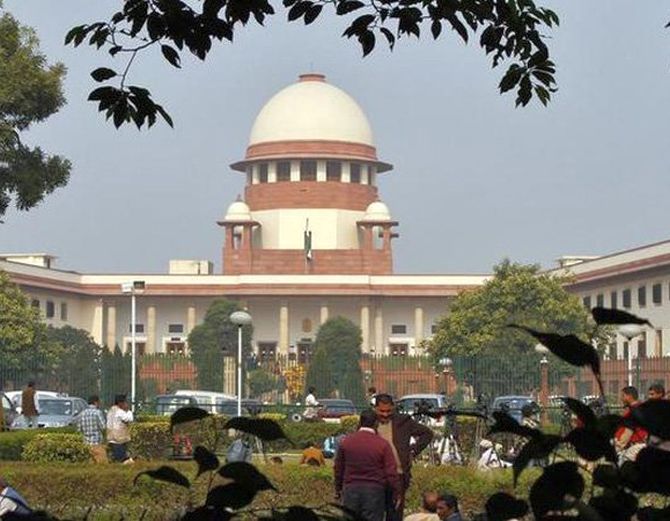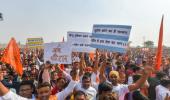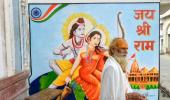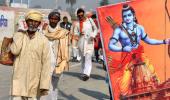The Muslim parties on Thursday took a U-turn on questioning the authorship of the 2003 report of the Archaeological Survey of India and apologised to the Supreme Court for wasting its time in the Ayodhya land dispute case.

A 5-judge constitution bench, headed by Chief Justice Ranjan Gogoi, was told by senior advocate Rajeev Dhavan that they do not wish to question the authorship of the summary of the ASI report, which had found artefacts, idols, pillars and other remains suggesting the existence of massive structure beneath the Babri Masjid.
The submission by the Muslim parties assumes importance as the apex court had Wednesday asked them as to how their objections to the ASI report could be entertained at this stage, when they failed to take the legal remedy available to them under the law before the Allahabad high court.
Going for the damage control, Dhavan, the lead lawyer for the Muslim parties, apologised for the submissions by senior advocate Meenakshi Arora for considerable duration Wednesday on the ASI report.
"It is not expected that every page of the report needs to be signed. The authorship of the report and the summary need not be questioned. If, we had wasted my lords time, then we apologise for that.
"There is no point going into that discussion as it is futile. It goes into questioning the authenticity of the ASI report.
"The report in question has an author and we are not questioning the authorship," Dhavan, representing the Muslim parties, said.
Arora had said that the report, which has 10 chapters attributed to an author, had a summary that was not attributed to anybody.
The bench at the outset asked both the Hindu and the Muslim parties to specify the time-frame for completing their arguments saying that there will not be any extra day after October 18.
"There will not be any extra day after October 18. It will be miraculous, if we deliver the judgement in four weeks in the matter," said the bench, also comprising Justices S A Bobde, DY Chandrachud, Ashok Bhushan and S Abdul Nazeer.
The bench also stated that Dhavan in his opening remark has said that he has not forfeited his right to question the report but the evidences cannot be discredited after being accepted by the court.
It said there are three points -- whether the court commissioner decided on something which was not asked, whether the commissioner failed to decide what was asked or whether there were any contradictions in the report.
"In our views these points can certainly be argued. We see no problem to that but the report which has been taken as evidence by the court cannot be discredited at this stage," it said.
Dhavan said they had tried to raise the objection to the ASI report before the High Court but the judges said that it would be decided at the final stage, which unfortunately was not done.
He said the report of the Commissioner and the evidence taken by him form part of the record and if the report cannot be questioned, then it will have wide ramification.
"If, this is the case and when we did not examine the court commissioner, we cannot rely on the report at this stage as the report has been taken as a evidence. The report becomes non est (does not exist)", he said, adding that "if, we have not availed the remedy, then we cannot question the report at this stage".
"Therefore, I request the court to not go into that discussion," he said, leaving it for Arora to continue her arguments in which she assailed the ASI report contending that there were only inferences and conjectures about evidences to suggest that there was a massive structures beneath the mosque.
Arora said wall found during the excavation could be of Eidgah mosque as it faces West, like any Eidgah and why should there be an inference that such a wall is part of the temple? and 'our case is that the mosque was built on a vacant land, since the wall came to light much later after the suit was filed'.
She said there was no evidence it was a Janmsthan of Lord Rama and there are no materials which can say that mosque was constructed after demolishing the temple.
"There is nothing to show in this report, which suggest that it was a Janmsthan and the temple was demolished to construct a mosque. It is just based on inferences and it is like a report of a hand writing expert, who has drawn his conclusion from the inferences, which has to be tested on some direct and substantive evidences," Arora said.
Arora said Carbon dating methodology can be used for stratification but the ASI did not use the bones found at the disputed site, so there was no carbon dating.
She said according to the report the massive structure was built in 12th century and raised objections to the ASI report which had referred the mosque as a disputed structure while 'Ram Chabutra' has been described as a shrine.
The lawyer said the report also takes into account that after the demolition of the disputed structure, the ASI also found various slabs containing the pictures of animals, and flowers, including that of lotus from the ruins and the claim is that the lotus cannot be singularly associated with the Hindus as it has also been found in Islamic structures as well.
She said the report suggested that the material used for making the structures found beneath the ground was Lime surkhi, and the temple is said to have been built before it came to be used by the Delhi sultanate.










